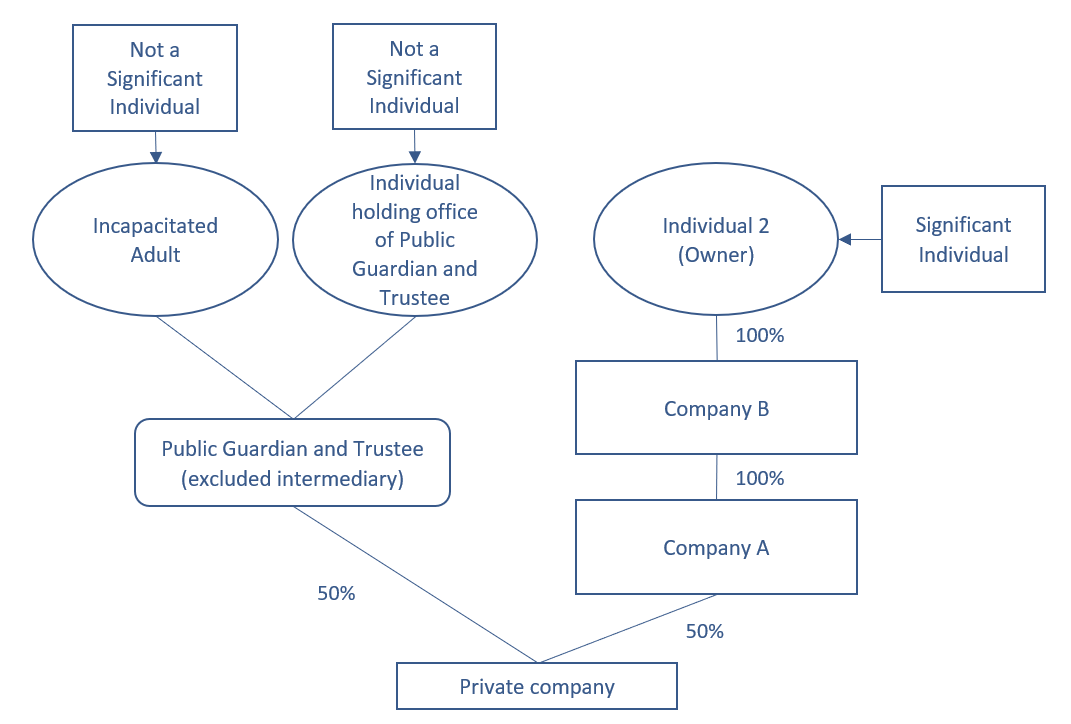3. Special Rules for Indirect Control
Excluded Intermediate Entities or Persons
Indirect control refers to a situation where there is at least one intermediate entity or person between the private company and the significant individual(s) at the top. The indirect control rules require you to look through intermediate entities or persons in a chain of control until you have identified the natural person who indirectly controls the shares or rights of the company.
The Business Corporations Regulation sets out special rules for excluded intermediate entities or persons. When there is an excluded intermediate entity or person in a chain of control, you can stop the look-through process and do not have to list anyone as significant individual. The excluded intermediate entities or persons are:
- Public corporations
- Corporations that are wholly owned subsidiaries of a public corporation
- Trust companies or extra-provincial trust corporations as defined in the Financial Institutions Act
- Insurance companies or extra-provincial insurance corporations as defined in the Financial Institutions Act
- Credit unions or extra-provincial insurance corporations as defined in the Financial Institutions Act
- Government corporations as defined in the Financial Administration Act
- Government corporations that are majority owned or controlled by the government of Canada or a province
- Special act corporations1 and their wholly owned subsidiaries
- Corporations incorporated or wholly owned by a municipality or regional district
- Authorities that operate an independent school in British Columbia
- Corporations incorporated or converted under the School Act
- Corporations that are wholly owned by one or more Indigenous nations
- Trustees of a testamentary trust
- B.C. Public Guardian and Trustee or equivalent in another Canadian jurisdiction
For the purposes of the indirect control rules, no one controls the intermediate entities or persons listed above.
This means that if you encounter one of the excluded intermediate entities or persons when following up a chain of control, you are not required to keep looking through that entity or person; you can stop there and do not have to list anyone as significant individual for the shares or votes held in that chain of control.
Note: If any other shares or votes of the company are held in a separate chain of control, you still need to look through intermediate entities or persons in that separate chain of control to determine if someone has indirect control of those other shares or rights and needs to be listed as significant individual in the company’s register. See example.
Example - Excluded Intermediate Entities or Persons
In the diagram above, The individual currently appointed as B.C. Public Guardian and Trustee does not have to be listed as a significant individual in the register of a private company, even if they have indirect control of 50% of the shares or votes of the company because the Public Guardian and Trustee is an excluded intermediate entity or person.
By contrast, Individual 2 has indirect control of the other 50% of the shares or votes of the private company through Company A and Company B (non-excluded intermediate entities or persons) and must be listed as a significant individual in the company’s register.
Footnote:
1 A special act corporation is a corporation that is incorporated under its own federal or provincial statute rather than under a corporate law of general application such as the Business Corporations Act.

